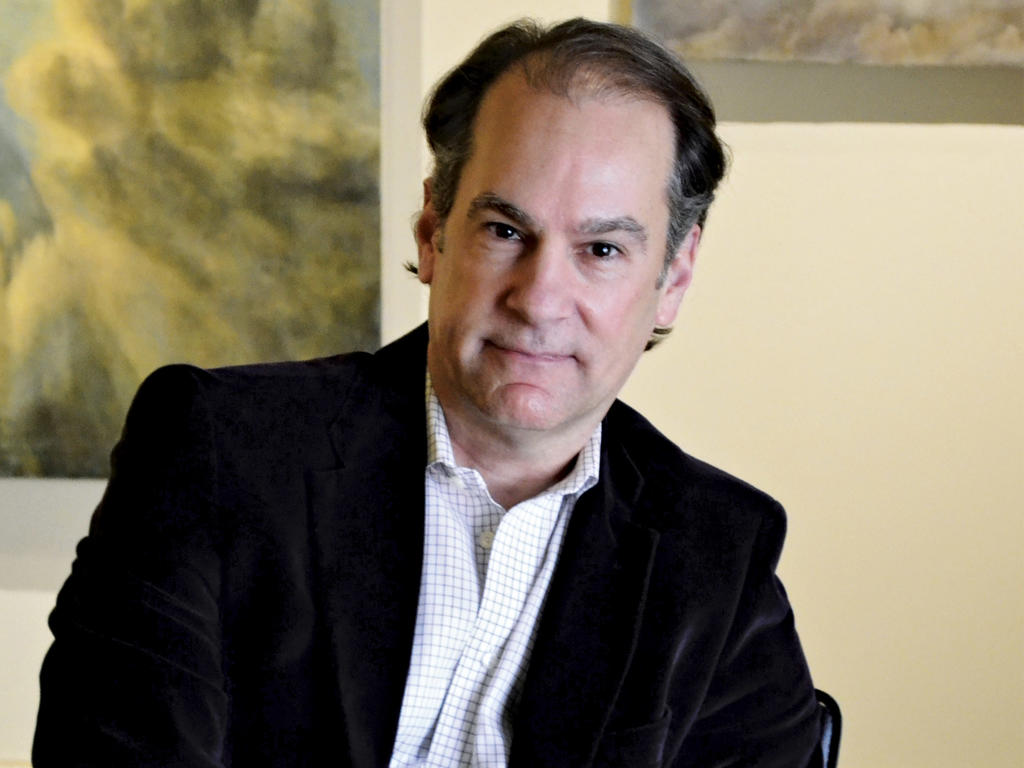Asked to choose one word to describe the David Lusk Gallery on its opening night this past February, some might say festive. Or maybe, gleaming. Joyous. Spacious. Modern.
All of those words certainly apply, as does the descriptor “packed.” The crowd that night revolved around the open spaces of the gallery shoulder to shoulder. The celebration could hardly have been more successful for Lusk, a member of the Class of 1987, and provided a stunning exclamation point on his career as the city’s leading gallery owner and artist representative for contemporary art.
While a student at Rhodes, Lusk combined English, media arts, and business classes to create an interdisciplinary degree—what he refers to as “the true liberal arts experience”—that has served him well. He had an internship in the marketing department at Mud Island during its heyday and then began his career at an advertising agency. By 1988, he was assisting the late Lisa Kurts in marketing her contemporary art gallery and, in 1995, he opened David Lusk Gallery at its original location in Laurelwood, but closed last year in anticipation of his move.
Noting that, in addition to his Memphis gallery, he has a location in Nashville and travels the globe to promote his artists, Lusk recognizes that the Bluff City might not leap to mind when the topic turns to contemporary art.
“I am often asked, ‘How is art sold in a city like Memphis?’” says Lusk. “And I say it sells because of the strong art programs over the years at Rhodes and Memphis College of Art and University of Memphis, because of leaders in the academy and its progenitors. Because of that, there are so many makers—artists—in the community.”
Lusk is well-connected with the web of artists whose names make up the history of contemporary art in Memphis. Specifically, he mentions Carroll Cloar, Mary Sims, Lon Anthony, Betty Gilow, Pinkney Herbert ’77, Daisy Craddock ’71, Carol DeForrest ’71, Marina Pucini, Hamlett Dobbins, and Joel Parsons ’07. Collectively, they have either taught at or are alumni of Rhodes.
Even though Lusk has taken a more traditional gallery route, he acknowledges that the trend toward home galleries, covered in “Creative Connections” on page 22, opens the art world up to more potential patrons. At the same time, the proprietors of these galleries learn the many facets of marketing art.
“They get to learn what is involved from a practical standpoint—working with the artist, marketing the art, cleaning the space, getting the snacks. These galleries are cheap to run and are autonomous,” Lusk says.
Young artists in Memphis today who open their homes to exhibitions or perform in rentable spaces like Crosstown Arts follow in the footsteps of those who opened early alternative galleries like Plan B, which occupied an old factory in the early days of Cooper-Young. Or like Marshall Arts, the art space that Pinkney Herbert opened in an old auto-body repair shop in the Edge district in 1992, which is still thriving today. Lusk describes Herbert as a “great caretaker of young artists,” and both in this role and through his art, Herbert continues the long tradition of Rhodes’ alumni and professors contributing to the Memphis arts community.
— Lynn Conlee
